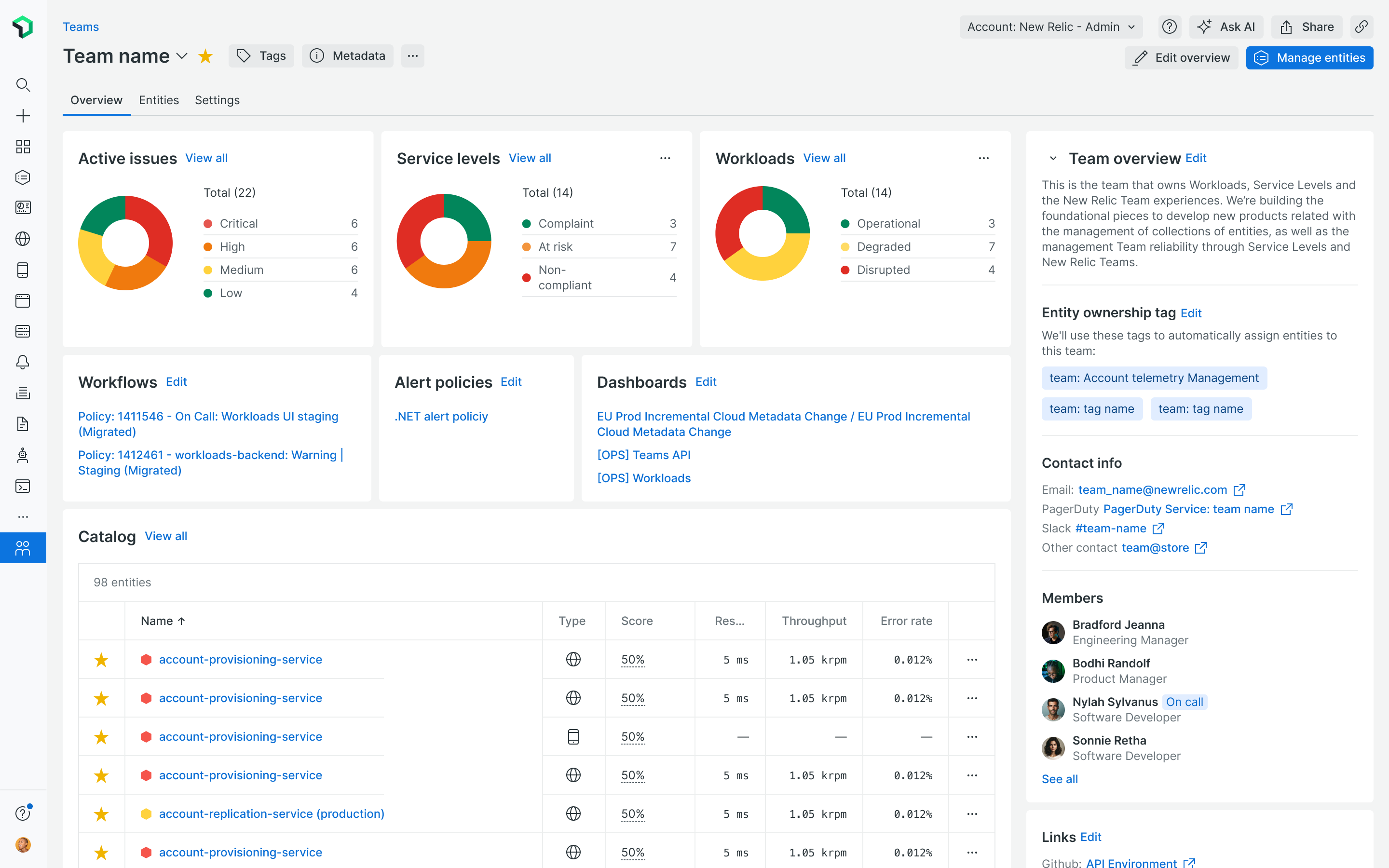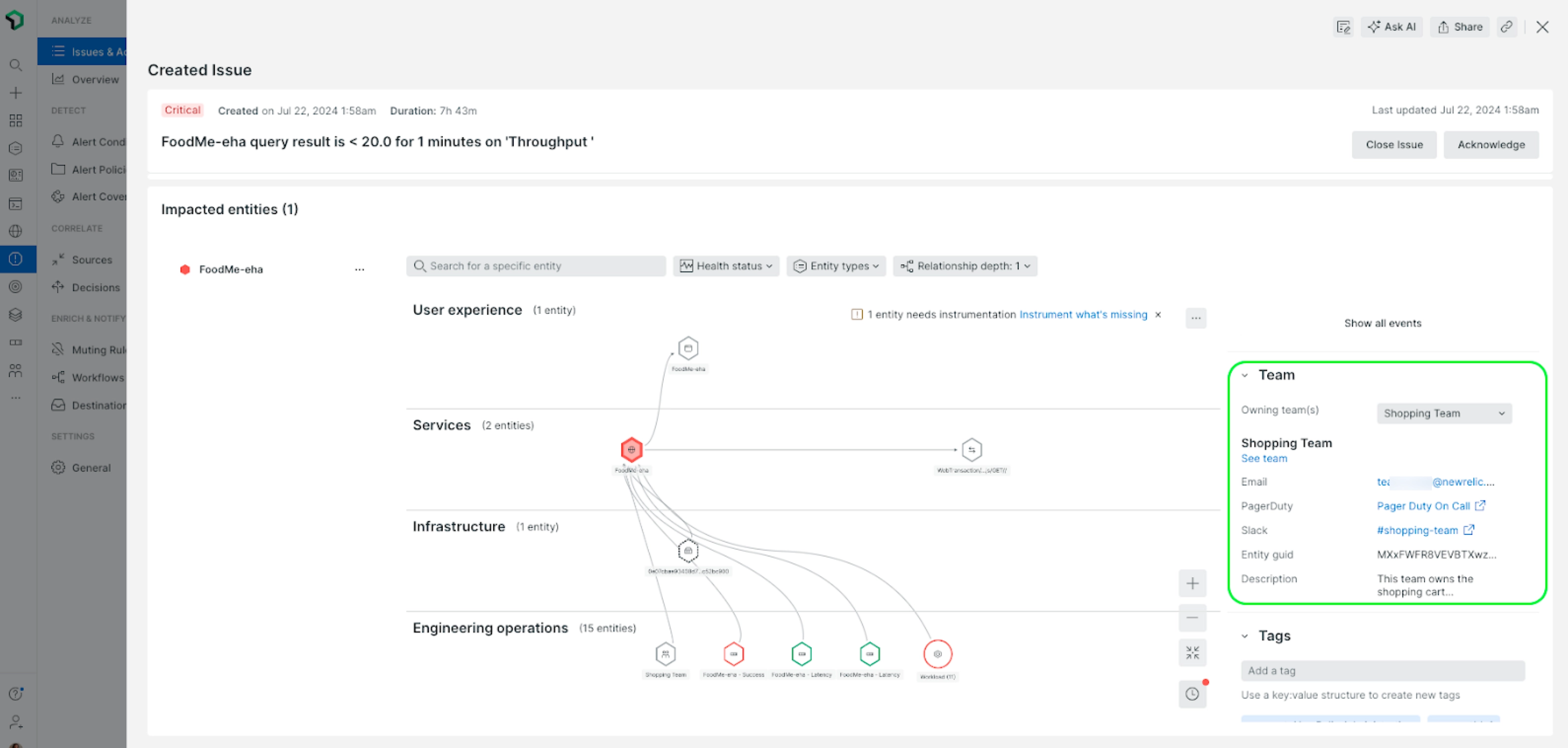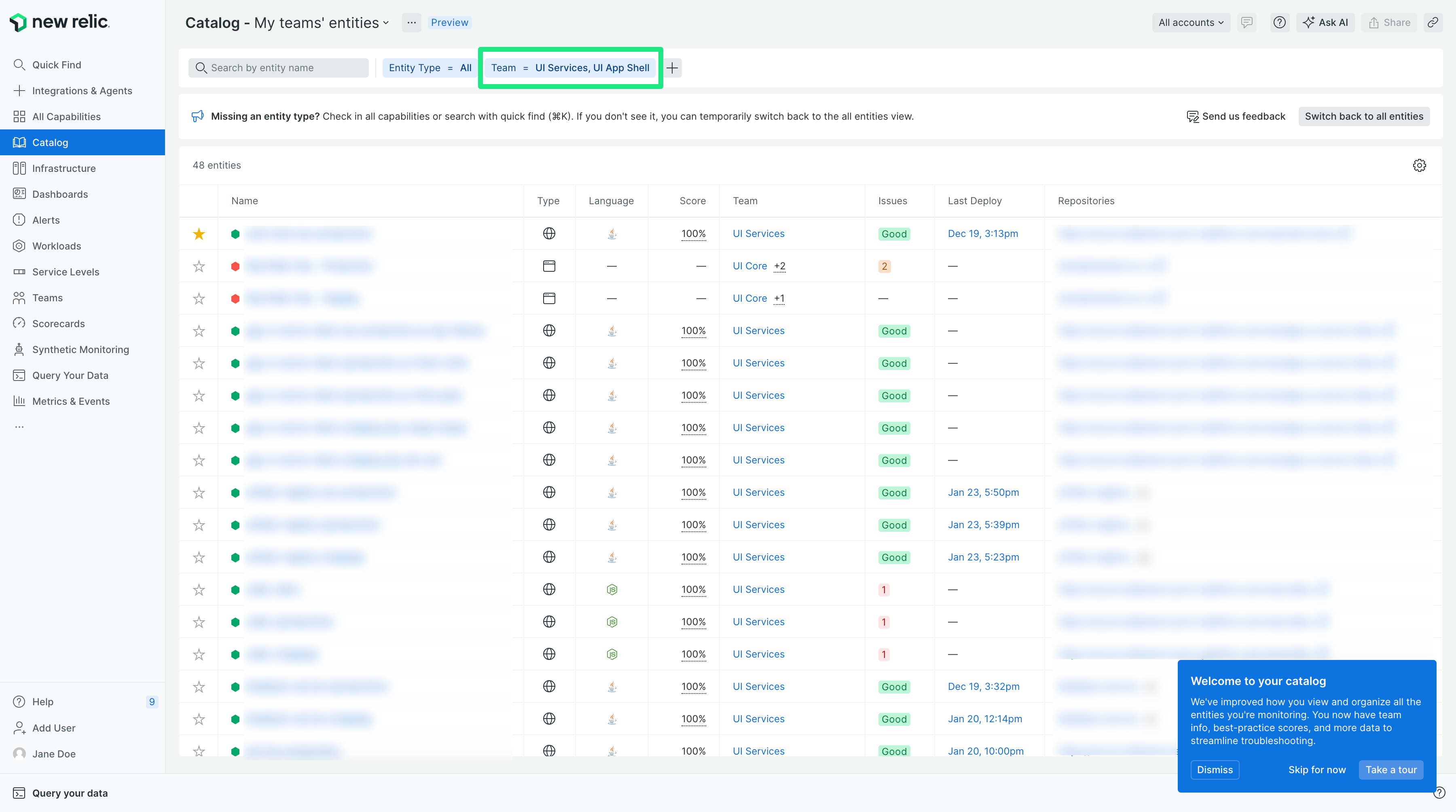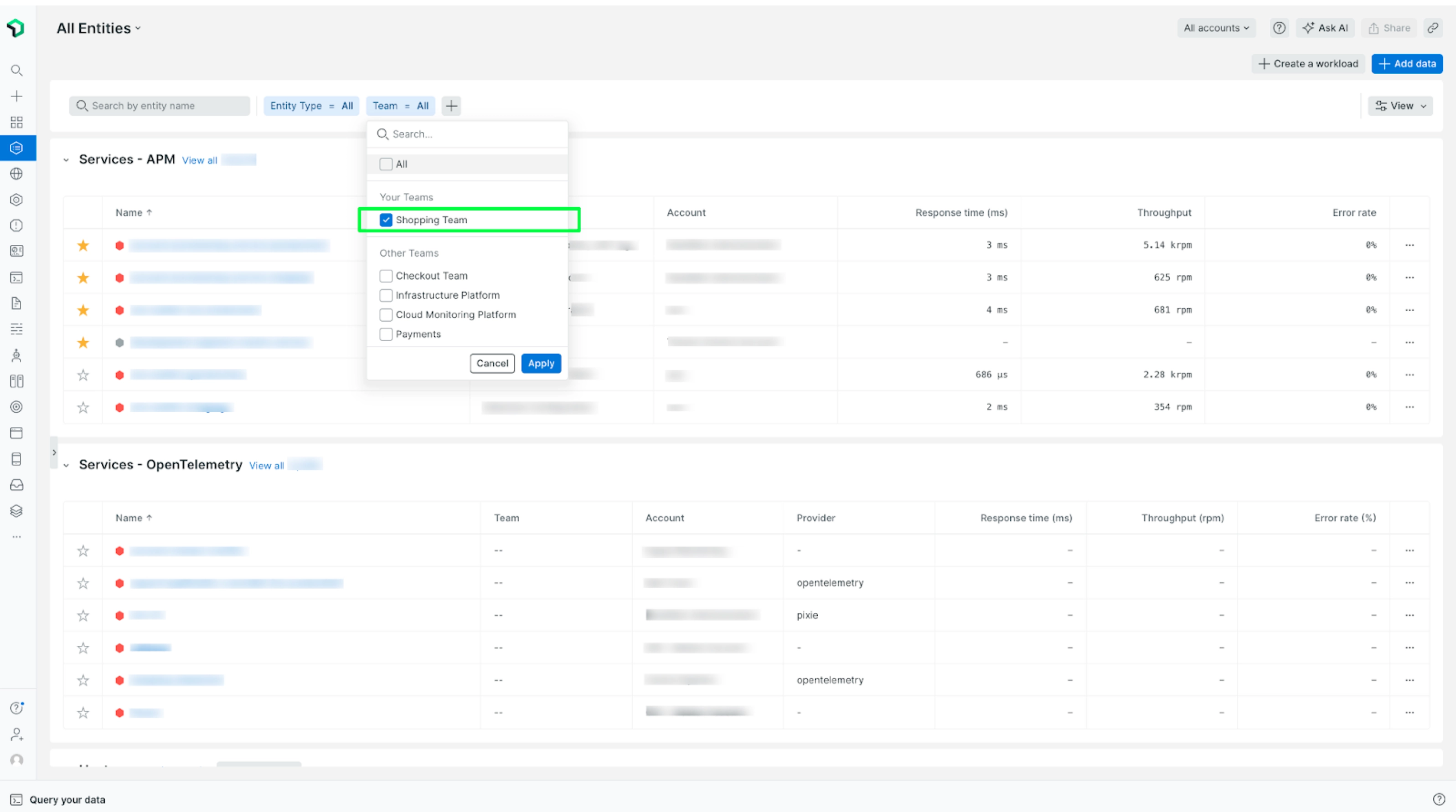New Relic Teams lets you connect the entities you're monitoring to the Teams who own them. When you can easily see who owns an entity, you can speed up troubleshooting, enhance team collaboration, and improve your operational efficiency.
By assigning the different parts of your system to the teams who maintain them, you can find the right team for any service, host, or other entity.
How can you use Teams across New Relic?
You can leverage New Relic Teams in a variety of places across the platform. This means Teams is available when you need it to contact owners of specific entities. Here are some examples of how you can leverage the power of Teams:
The Team's hub page
The 'Team' hub page is a centralized space for all of your team's essential information. It facilitates collaboration among team members and keeps everyone updated about important developments. In the Overview tab you will find:
- All active issues related to the entities your team owns that have been opened in the last 3 days.
- A summary of your team's Service Levels statuses.
- A summary of your team's Workloads statuses.
- A summary of your team’s Scorecards compliance.
- All error groups (Errors Inbox) of your team.
- The list of team members that make up this team.
- The list of all the important dashboards for easy access by any members of the team.
- Links to documentation, runbooks, and troubleshooting guides relevant to your monitored systems and applications.
- The list of the team's Workflows.
- The list of the team's Alert Policies.

In the Entities tab you will find all the entities your team owns and their health status.





